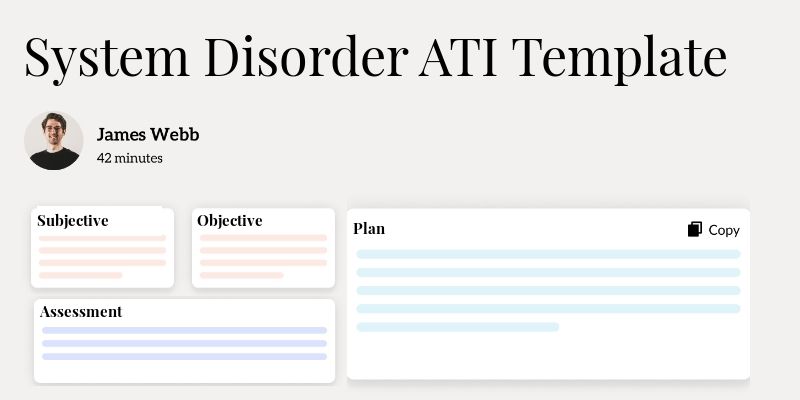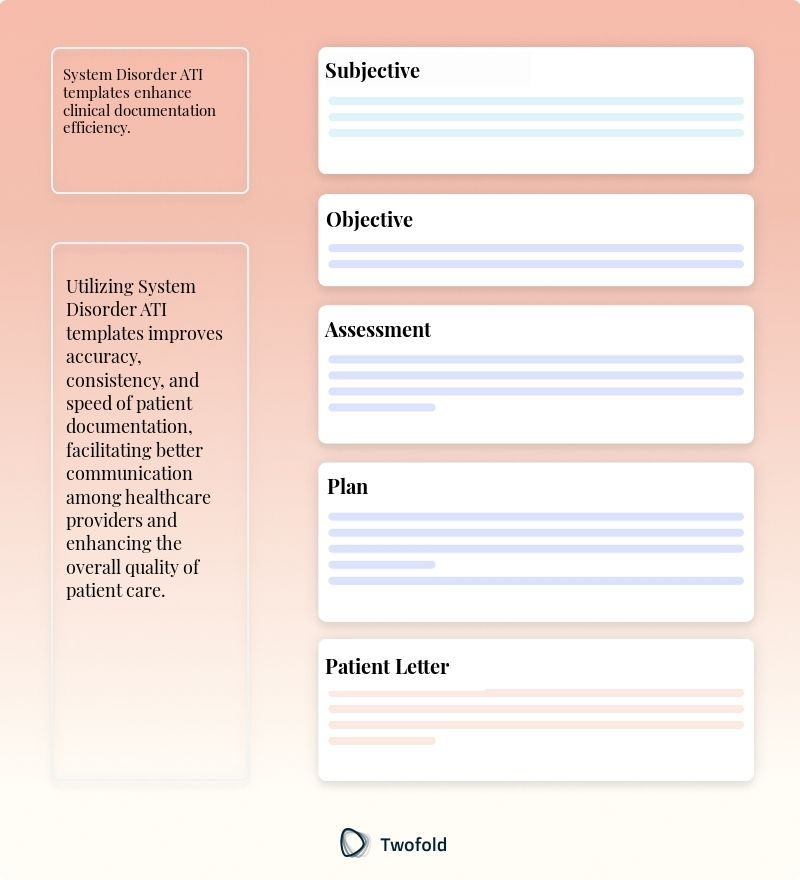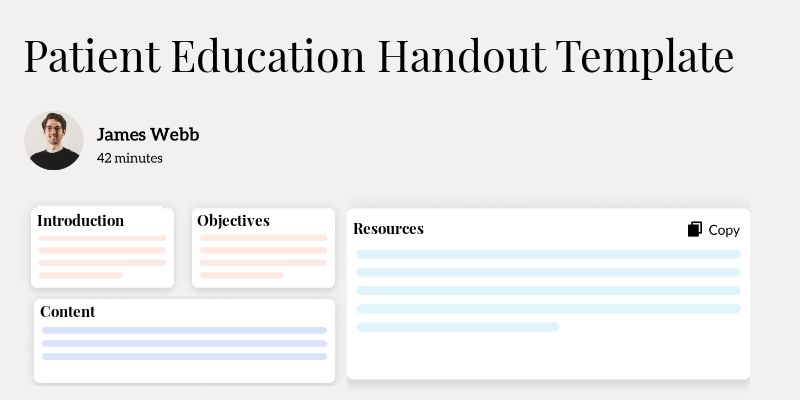
System Disorder ATI Template
Hey there! So you've heard about the System Disorder ATI Template and you're curious about how it can streamline your documentation process in healthcare settings, right? Health professionals often get bogged down by the complexity and specificity needed in medical documentation. This article will guide you through the STI Template's inner workings to help you achieve clarity and efficiency in your notes.
What Is a System Disorder ATI Template?
The System Disorder ATI Template is a structured medical documentation tool used in healthcare settings to document various system disorders systematically. It is designed to standardize the way clinicians capture information related to patient disorders, ensuring that no critical detail is overlooked.
This template plays a crucial role in translating the complexities of patient conditions into concise, actionable medical records. By structuring information uniformly, it enhances communication among healthcare professionals, leading to better patient outcomes.
Key Components of a System Disorder ATI?
This template consists of distinct sections that cater to specific aspects of patient information:
- Patient Demographics: Name, age, and other identifiers
- Medical History: Comprehensive overview of patient’s past conditions
- Symptom Analysis: Detailed exploration of present symptoms
- Diagnosis: Clear articulation of the system disorder
- Treatment Plan: Recommended treatments and interventions
- Follow-up: Scheduled checks and future appointments

How to Use a System Disorder ATI Template: Step-by-Step Process
Step 1: Gather Preliminary Patient Information
Start by collecting basic demographic details and the patient's medical history. This foundational step helps in accurately attributing symptoms to the correct patient profile.
Step 2: Analyze and Document Current Symptoms
Engage in a thorough assessment of the patient's current condition, making detailed notes of any symptoms that may indicate a systemic disorder.
Step 3: Conduct and Record Diagnostic Tests
Ensure all necessary tests are carried out and the results are accurately entered in the diagnosis section of the template. This step solidifies the patient's condition understanding.
Step 4: Formulate a Treatment Plan
Develop a comprehensive treatment plan that addresses the identified disorder. Detail medications, therapies, and lifestyle recommendations clearly in the template.
Step 5: Schedule and Document Follow-up Care
Record future appointments to monitor the patient’s progress, adjusting the treatment plan accordingly based on follow‑up assessments.
Benefits of a System Disorder ATI Template
Benefit | Description |
|---|---|
Improved Communication | Facilitates clear and effective communication among healthcare team members. |
Enhanced Accuracy | Reduces errors in documentation by standardizing the recording process. |
Time Efficiency | Streamlines data entry, allowing practitioners to dedicate more time to patient care. |
Compliance | Ensures adherence to current medical documentation standards and guidelines. |
Stakeholders in System Disorder ATI
Several key stakeholders benefit from using the System Disorder ATI Template, each with their own unique perspective and needs:
- Clinicians: Enhance their ability to diagnose and treat system disorders efficiently. For instance, a primary care physician can refer to precise, organized data quickly during patient consultations.
- Healthcare Administrators: Facilitate resource management with accurate data records helping in making informed decisions.
- Insurance Providers: Use detailed notes to expedite claims processing and minimize disputes, ensuring timely settlements.
- Patients: Benefit from clarified instructions and a personalized, documented care path improving their confidence in the treatment plan.
Example of a System Disorder ATI PDF
Here's what an actual System Disorder ATI Template looks like, providing a glimpse into its utility and layout.
Real-World Use Cases: Practical Impact of the System Disorder ATI Template
Incorporating the System Disorder ATI Template has transformed the way patient data is used and shared. Here’s a collection of real‑world scenarios where its impact is felt deeply:
- Emergency Room Efficiency: Quickly accessing past medical history during emergency situations leads to faster and more accurate treatment decisions.
- Chronic Care Management: Consistent documentation allows for better monitoring and managing chronic system disorders over time, enhancing patient outcomes.
- Collaborative Care Settings: Facilitates multi-disciplinary teams with access to standardized and comprehensive patient information, ensuring synchronized care efforts.
Conclusion
The System Disorder ATI Template is a powerful tool for healthcare professionals. By adopting this structured approach, practitioners can provide high‑quality care characterized by accuracy, efficiency, and patient‑centric communication. Its widespread implementation improves clarity in medical documentation, benefiting patients, healthcare providers, and administrators alike.
Disclaimer: This article is for informational purposes only and does not constitute legal or medical advice. Always consult professional guidelines and regulatory bodies for specific compliance requirements.

Dr. Danni Steimberg
Dr. Danni Steimberg is a pediatrician at Schneider Children’s Medical Center with extensive experience in patient care, medical education, and healthcare innovation. He earned his MD from Semmelweis University and has worked at Kaplan Medical Center and Sheba Medical Center.
ATI system‑disorder sheets can feel like data dumps—but done right, they become pocket‑ready clinical roadmaps. The DISORDER framework—Definition, Incidence/Risk factors, Signs & symptoms, Outcome goals, Recommended diagnostics, Drug & non‑drug interventions, Education pearls, Rehab & follow‑up—keeps every box focused and exam‑ready.
- Cluster Signs & Outcome Goals: Pair each key symptom with its ideal outcome (e.g., “crackles → clear lung sounds”) in adjacent lines—this one-to-one link cements patho-logic and NCLEX-style prioritization.
- Link Diagnostics to Interventions: Note how specific labs or imaging guide treatment tweaks (“↑ BNP → add diuretic”) so the template reads like a decision tree rather than a list.
- Finish with Education & Rehab: End each sheet with two high-yield teaching points and one follow-up metric; this habit mirrors clinical practice and scoring rubrics, making both instructors and preceptors take notice.
Frequently Asked Questions
Reduce burnout,
improve patient care.
Join thousands of clinicians already using AI to become more efficient.

Patient Education Handout Template
Discover practical Patient Education Handout Template templates to enhance your documentation efficiency.

Occupational Therapy Goals Examples Template
Discover practical Occupational Therapy Goals Examples Template templates to enhance your documentation efficiency.

Compliance Checklist Template
Discover practical Compliance Checklist templates to enhance your documentation efficiency.

